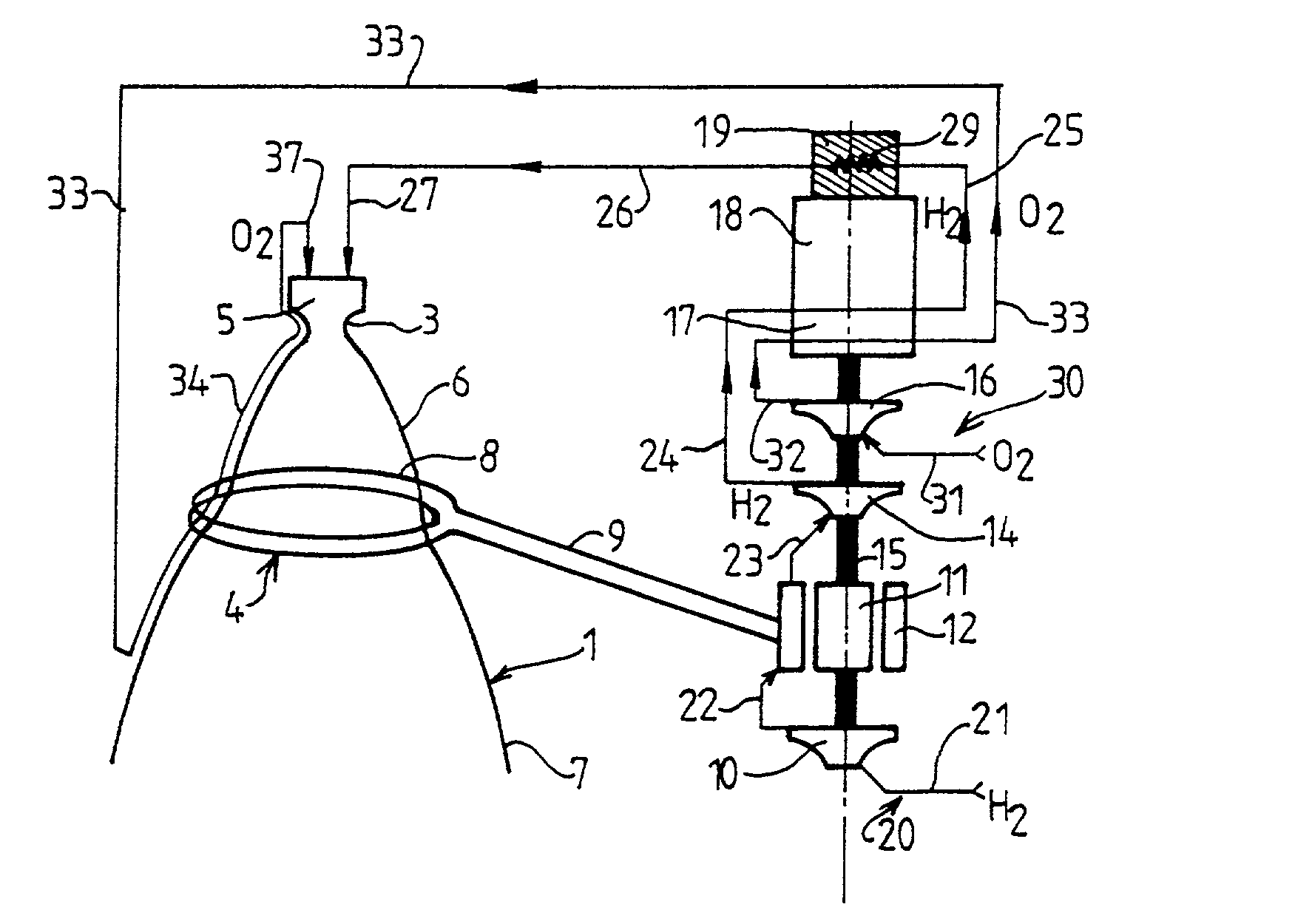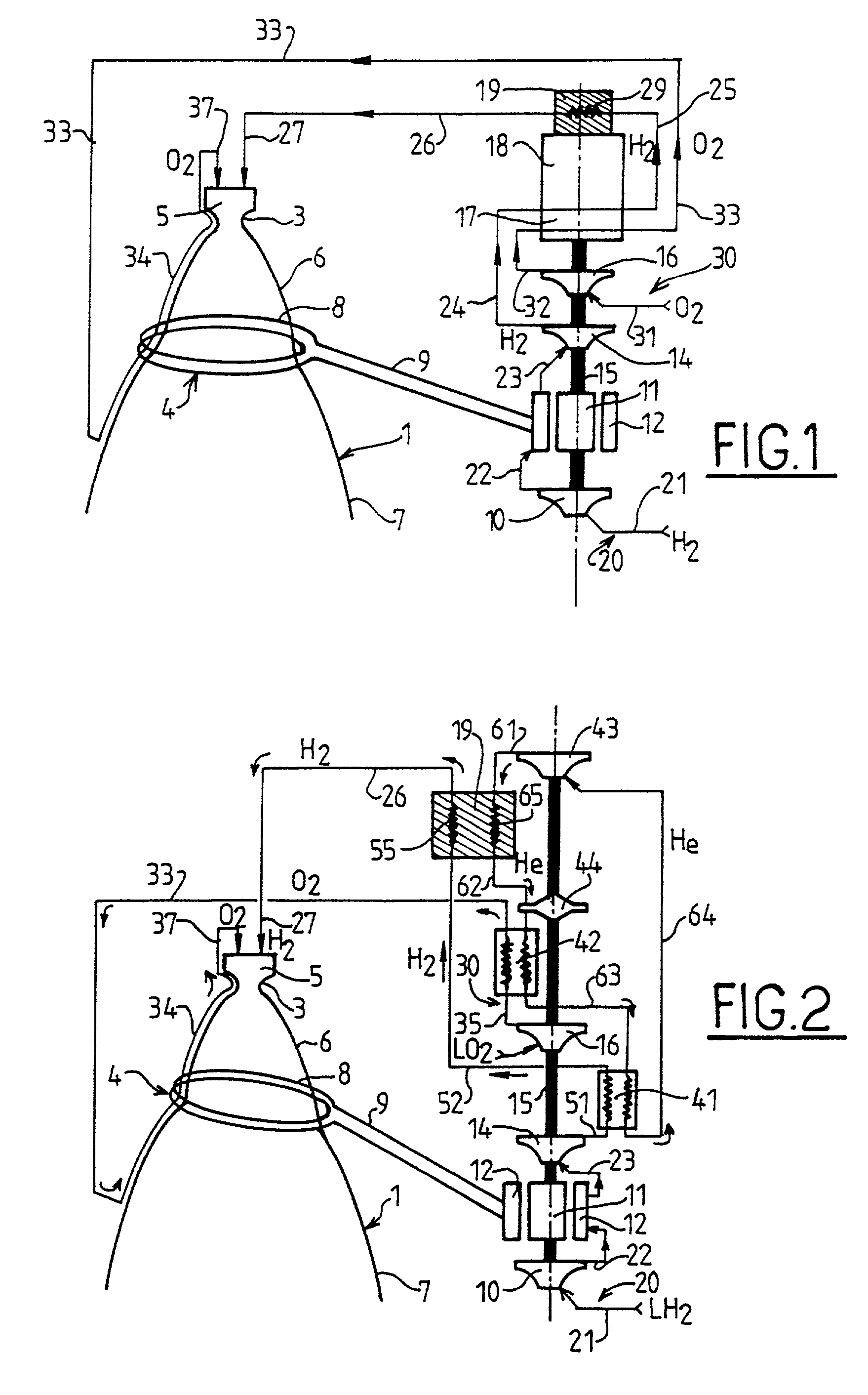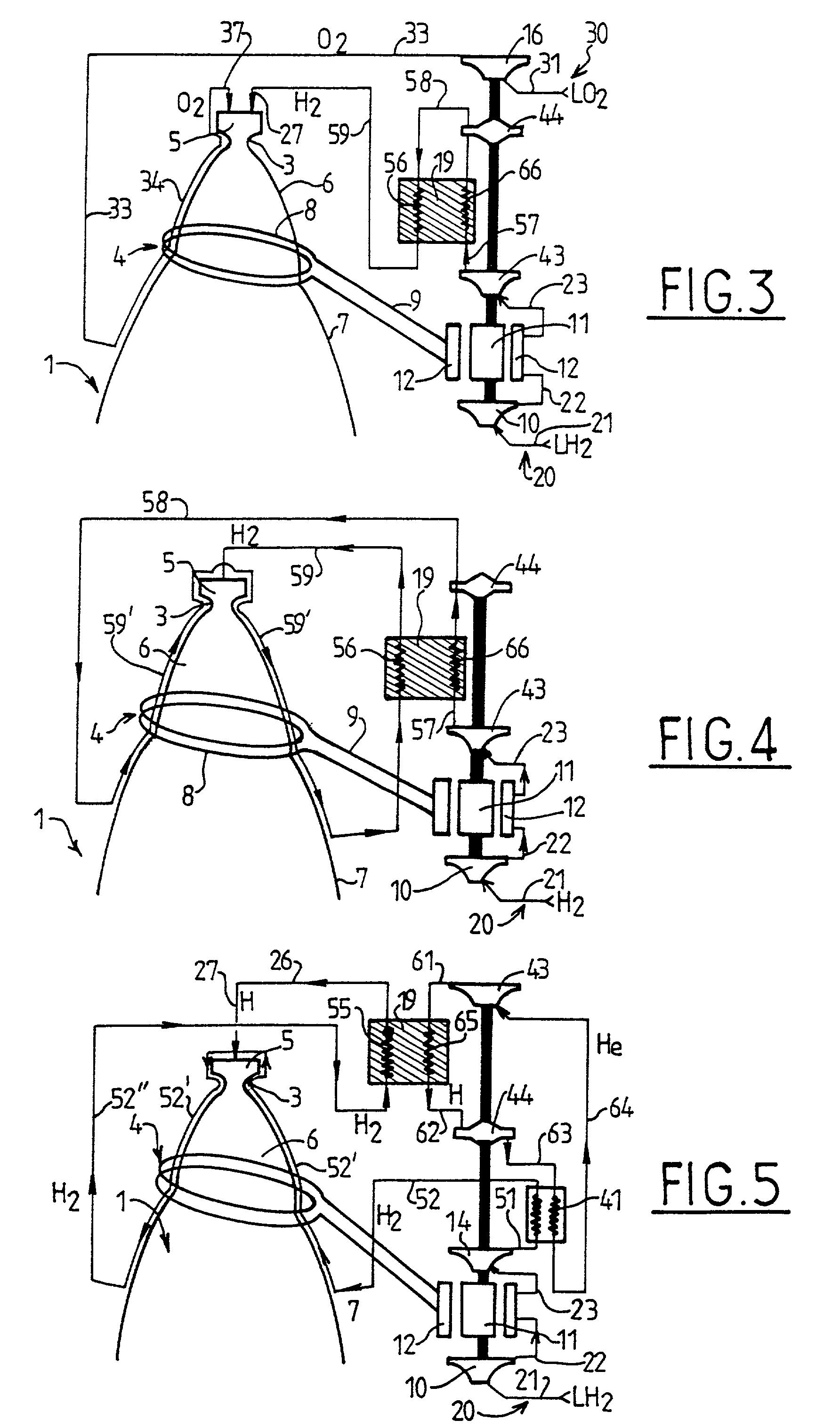Propulsion device, in particular for a rocket
a technology for rockets and propellants, which is applied in the direction of machines/engines, nuclear power plants, nuclear engineering, etc., can solve the problems of physical limits of this parameter, relatively difficult to obtain sufficient payload, and slow progress
- Summary
- Abstract
- Description
- Claims
- Application Information
AI Technical Summary
Benefits of technology
Problems solved by technology
Method used
Image
Examples
Embodiment Construction
[0069] The propulsion device of induction nuclear chemical type shown in FIG. 1 has a hydrogen circuit 20 which comprises a duct 21 for feeding hydrogen to a pump 10 which feeds a duct 22 and whose outlet is connected to the inlet of a cooling circuit 12 for cooling an electricity generator 11. The cooling circuit 12 has an outlet connected to a duct 23 which feeds a pump 14 which directs hydrogen via a duct 24 causing it to pass through a heat exchanger 17 where it serves as a heat sink for a heat engine 18, after which, in order to be heated, a duct 25 causes it to pass through a heat exchanger 29 of a nuclear core 19 which serves as a heat source for the heat engine 18. Downstream from the nuclear core 19, the duct 26 directs the gaseous hydrogen to a duct 27 for feeding an injection chamber 5 disposed upstream from a nozzle 1 which has a throat 3 and which flares progressively at 6 and at 7, the flared regions 6 and 7 being separated by a region 4 in which an induction loop 8 is...
PUM
 Login to View More
Login to View More Abstract
Description
Claims
Application Information
 Login to View More
Login to View More - R&D
- Intellectual Property
- Life Sciences
- Materials
- Tech Scout
- Unparalleled Data Quality
- Higher Quality Content
- 60% Fewer Hallucinations
Browse by: Latest US Patents, China's latest patents, Technical Efficacy Thesaurus, Application Domain, Technology Topic, Popular Technical Reports.
© 2025 PatSnap. All rights reserved.Legal|Privacy policy|Modern Slavery Act Transparency Statement|Sitemap|About US| Contact US: help@patsnap.com



